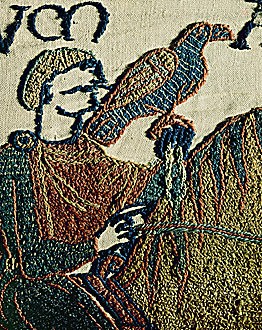Dresden Codex
To the great disappointment of doomsdayers, this codex merely contains records of the Moon and Venus
Contributors:Tre
The Dresden Codex was named in the tradition of all other codices: not for its point of origin, but for its final resting place. It lives in the Saxon State Library in Dresden, Germany, under glass and above mirrors, allowing for the viewing of both sides of the text.
It's the most complete of the three authenticated codices, and dates to pre-Columbian Mexico, 11th or 12th century Chichen Itza in the Yucatan, and is thought to be a copy of a much older work from two or three hundred years before. Though doomsday enthusiasts would love to believe it holds the secrets of the coming apocalypse, in reality it merely paints of picture of meticulous early astronomers, holding the astronomical charts of the Moon and Venus, including precise calculations of lunar eclipse. These charts would have served as an almanac and calendar for ritual celebrations.
It is speculated that this codex was taken from Chichen Itza by Hernando Cortes in 1519 and presented as a gift to King Charles I of Spain, who financed Cortes’ expeditions and appointed him governor of the Mexican territories. The over 200-year gap between this theorized trip across the ocean and 1739, when the codex was purchased from a private collection in Vienna by Johann Christian Götze, the director of Royal Library of Dresden (now the Saxon State Library), is completely undocumented.
After coming to live in Dresden, it stayed out of the public eye for another one hundred years before being displayed between two plates of glass. During the WWII firebombing of Dresden in 1945, the codex was badly water damaged, and after careful restoration put back under glass in the wrong order. This mistake was never fixed because parts of the Amatl paper (flattened fig bark) and pigment adhered to the glass, assuring its destruction if disturbed again.
It's the most complete of the three authenticated codices, and dates to pre-Columbian Mexico, 11th or 12th century Chichen Itza in the Yucatan, and is thought to be a copy of a much older work from two or three hundred years before. Though doomsday enthusiasts would love to believe it holds the secrets of the coming apocalypse, in reality it merely paints of picture of meticulous early astronomers, holding the astronomical charts of the Moon and Venus, including precise calculations of lunar eclipse. These charts would have served as an almanac and calendar for ritual celebrations.
It is speculated that this codex was taken from Chichen Itza by Hernando Cortes in 1519 and presented as a gift to King Charles I of Spain, who financed Cortes’ expeditions and appointed him governor of the Mexican territories. The over 200-year gap between this theorized trip across the ocean and 1739, when the codex was purchased from a private collection in Vienna by Johann Christian Götze, the director of Royal Library of Dresden (now the Saxon State Library), is completely undocumented.
After coming to live in Dresden, it stayed out of the public eye for another one hundred years before being displayed between two plates of glass. During the WWII firebombing of Dresden in 1945, the codex was badly water damaged, and after careful restoration put back under glass in the wrong order. This mistake was never fixed because parts of the Amatl paper (flattened fig bark) and pigment adhered to the glass, assuring its destruction if disturbed again.








